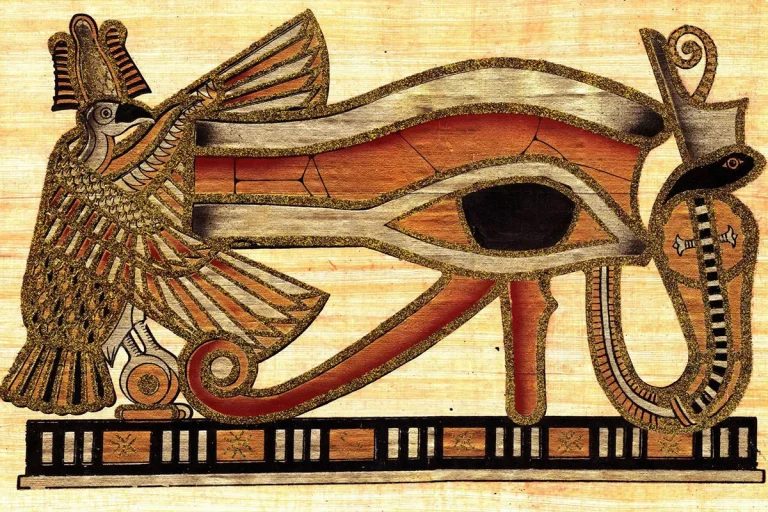If you’ve ever been out in nature at night and heard the eerie, high-pitched howl of a coyote, it likely sent a chill down your spine. Coyotes are very vocal canines, using a wide range of howls, yips, and barks to communicate with each other across long distances.
If you’re short on time, here’s a quick answer to your question: Coyotes howl for a variety of reasons, including claiming territory, locating pack members, bonding, and communicating alarm or threats.
In this comprehensive guide, we’ll explore the nuanced meaning behind the various coyote vocalizations, when and why they howl, the different types of howls, and what their howling means to them versus what it means to us as humans.
The Many Reasons Coyotes Howl
To Claim Territory
Coyotes are highly territorial animals, and one of the main reasons they howl is to claim and defend their territory. When a coyote howls, they are sending a clear message to other coyotes in the area that this space is already occupied. This vocalization serves as a warning to potential intruders to stay away. By establishing their territory through howling, coyotes are able to reduce conflicts and ensure their resources, such as food and mates, are protected.
To Locate Other Pack Members
Coyotes are social animals that live in family groups known as packs. Howling plays a crucial role in allowing pack members to locate each other over long distances. When a coyote howls, it produces a distinct sound that can travel up to several miles. By howling, coyotes are able to communicate their location and reunite with their pack members. This is especially important during hunting or when searching for mates.
To Bond the Pack
Howling is not only a means of communication but also a way for coyotes to strengthen the bond within their pack. When pack members howl together, it creates a sense of unity and cohesion. This vocalization reinforces social bonds and helps maintain the pack’s structure. It also serves as a way for coyotes to establish dominance within the group, as the alpha coyote typically initiates the howling session.
To Express Alarm
Another reason why coyotes howl is to express alarm or distress. When they encounter a potential threat, such as a predator or human presence, coyotes may emit a series of high-pitched howls or yips. This serves as a warning to other pack members and can also deter the perceived threat. By vocalizing their distress, coyotes are able to alert others to the potential danger and coordinate their response.
Understanding the different reasons behind a coyote’s howl can provide valuable insights into their behavior and social dynamics. It is important to remember that coyotes are wild animals and should be respected from a safe distance. If you encounter a coyote in the wild, enjoy observing them from afar and give them the space they need to thrive.
When Coyotes Howl
One of the most fascinating behaviors of coyotes is their howling. It is a distinctive sound that evokes both curiosity and a sense of mystery. Coyotes are highly social animals, and their howling serves various purposes depending on the situation. Let’s explore some of the common scenarios when coyotes howl.
At Dusk and Dawn
Coyotes are crepuscular creatures, meaning they are most active during twilight hours. At dusk and dawn, you might hear their howls echoing through the quiet landscapes. This is their way of communicating with other pack members, establishing territorial boundaries, and coordinating group activities. It’s an incredible experience to witness the symphony of howls as coyotes communicate with each other across vast distances.
When Separated From The Pack
When a coyote becomes separated from its pack, it often resorts to howling to locate its companions. This is a way for them to signal their presence and reunite with their family members. It’s a poignant reminder of the strong bonds that coyotes form within their packs and their reliance on one another for survival in the wild.
When Hearing Other Coyotes
When a coyote hears the howls of other coyotes in the vicinity, it may respond with its own vocalizations. This is a form of communication that helps establish social hierarchies and maintain contact between neighboring packs. The howling serves as a way for coyotes to exchange information about their presence, reproductive status, and overall health.
When Disturbed
Coyotes are highly adaptable creatures, and their ability to thrive in various habitats has earned them a reputation for resilience. However, they can be easily disturbed by human activity or other factors that disrupt their daily routines. When they feel threatened or alarmed, coyotes may unleash a chorus of howls as a defensive mechanism. It serves as a warning to potential threats and helps rally their pack members for protection.
Understanding the meaning behind a coyote’s howl allows us to appreciate their complex social lives and their remarkable ability to communicate with one another. If you ever have the chance to hear a coyote’s howl in the wild, take a moment to pause and listen to nature’s symphony.
Different Types of Coyote Howls
The Group Howl
One of the most distinctive sounds in nature is the group howl of a pack of coyotes. This howl is characterized by a chorus of high-pitched vocalizations that can be heard over long distances. The purpose of the group howl is to communicate with other members of the pack and establish territory boundaries. It’s a way for coyotes to announce their presence and warn other packs to stay away. The group howl is a powerful display of unity and strength, and it can send shivers down your spine.
The Group Yip-Howl
A variation of the group howl is the group yip-howl. This vocalization is characterized by a series of short, high-pitched yips followed by a long, drawn-out howl. The group yip-howl is often initiated by one coyote and is quickly joined by other members of the pack. It serves as a way for coyotes to communicate their location to one another when they are hunting or traveling together. The group yip-howl is a beautiful symphony of sounds that showcases the social bonds within a coyote pack.
Lone Howls
While coyotes are highly social animals, they also engage in solitary activities. One of these activities is the lone howl. A lone howl is typically emitted by a single coyote and is a way for them to communicate their presence to other coyotes in the area. It can serve as a territorial marker or as a means of attracting a mate. The lone howl is a haunting and lonely sound that echoes through the night, reminding us of the wild and untamed nature of these incredible creatures.
For more information on coyote howls and their meanings, you can visit https://www.nps.gov/articles/coyote-vocalizations.htm.
What It Means To Coyotes Versus Humans
Communication For Coyotes
For coyotes, howling serves as an essential form of communication within their social groups. It allows them to maintain contact with each other, establish territory boundaries, and coordinate hunting activities. The distinct howls of individual coyotes can convey information about their age, sex, and overall health. By howling, coyotes can also signal their presence to other nearby coyotes, ensuring that they maintain a safe distance from one another.
According to researchers at the National Park Service, coyotes have a varied repertoire of howls, each with its own unique meaning. For example, a lone howl might indicate a coyote searching for a mate or trying to locate its pack members. On the other hand, a group howl, often referred to as a chorus howl, is a way for a pack to assert its presence and defend its territory against rival packs.
A Sense of Wildness For Humans
While coyote howling has practical purposes for them, it also holds a certain allure for humans. The haunting sound of a coyote’s howl can evoke a sense of wildness and mystery, connecting us to the untamed natural world. It can stir up emotions and spark our imagination, reminding us of the diverse wildlife that still exists in our surroundings.
Many people find the experience of hearing a coyote howl in the distance both thrilling and humbling. It serves as a powerful reminder that we share our environment with these fascinating creatures and that nature continues to thrive alongside human development.
For some, encountering a coyote’s howl can even be a source of inspiration. It prompts us to appreciate the beauty and resilience of the natural world and encourages us to protect and preserve it for future generations.
Coyote Vocalizations Beyond Howling
While howling is the most well-known vocalization of coyotes, these intelligent creatures have a wide range of vocal expressions that they use to communicate with each other. Understanding these vocalizations can provide fascinating insights into coyote behavior and social dynamics.
Yips
Yips are short, high-pitched vocalizations that coyotes use to communicate over long distances. These yips are often heard during hunting or when coyotes are separated from their pack members. They serve as a way to maintain contact and coordinate activities. Yips are characterized by their rapid and rhythmic nature, creating a unique soundscape in the wilderness.
Barks
Coyotes also use barks as a form of communication. Barks can have different meanings depending on the context. They can be used to signal an intruder’s presence, warn other pack members of potential danger, or establish territory boundaries. The tone and intensity of barks can vary, conveying different messages to other coyotes in the area.
Whines and Whimpers
Whines and whimpers are softer vocalizations that coyotes use to express submission or convey a sense of vulnerability. These sounds are often heard during social interactions, such as when pack members greet each other or during courtship rituals. Whines and whimpers help to maintain social harmony within the pack and strengthen social bonds.
Understanding the meaning behind coyote vocalizations beyond howling can enhance our appreciation for these remarkable animals. If you want to learn more about coyotes and their vocal repertoire, visit https://www.nps.gov/subjects/coyotes/communication.htm for in-depth information from the National Park Service.
Conclusion
The wide vocal repertoire of the coyote serves many important purposes for them in the wild. As opportunistic hunters and scavengers, being able to communicate long-distance is key to their survival. While we may find their howls, yips, and barks unsettling, they are simply going about their daily and nightly routines as wild canines.
The next time you have a coyote encounter, take a moment to appreciate the complex social structure and communication strategies of these clever canids, rather than fearing their calls. Coyote howls are an iconic sound of the American wilderness.






